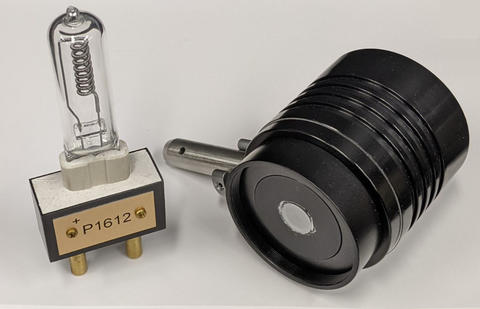Summary
The purpose of photometry is to measure light in a way that takes the sensitivity of human visual system into account. While radiometry measures light in all spectral regions, including ultraviolet and infrared, photometry only measures in the visible spectral region from 360 nm to 830 nm, where human eyes are sensitive. Thus, photometry is essential for evaluation of light sources and objects used for lighting, signaling, displays, and other applications where light is intended to be seen by humans.
NIST's program in photometry involves maintaining the SI base unit of luminous intensity, the candela, as well as other photometric quantities; establishing national calibration standards; and educating the photometric community about the fundamentals and practical aspects of photometry and photometric measurements.
Description

The development of revolutionary energy-efficient solid-state lighting (SSL) products has sparked the need for new performance metrics and measurement methods to address their unique construction and operating conditions. NIST has been working closely with the U.S. Department of Energy (DOE), Federal Aviation Administration (FAA), and national/international standardizing bodies to develop new documentary standards for SSL, with continued research on color quality, measurement methods, and robustness for light emitting diodes (LEDs) and SSL products. In addition, we are also developing world-class measurement infrastructure, new standard reference sources/sensors, new measurement capabilities, and measurement assurance programs to support the industry's measurement needs.
NIST makes significant contributions to SSL industry for R & D, components, modules, and final products. Activities cover
- research for optical metrology and vision science,
- development of calibration standard artifacts,
- providing measurement services to industry, and
- development of national and international industrial documentary measurement standards.
Realization of photometric quantities
The candela, SI base unit of luminous intensity, is realized with a detector-based method, dependent on the absolute responsivity of detectors. It is maintained on a group of six standard photometers, which are traceable to Division's reference cryogenic radiometer (POWR). The lumen, the unit of total luminous flux, is realized from the candela using the Absolute Integrating Sphere Method implemented in the NIST 2.5-m integrating sphere.
For more details about the realization of these quantities, see Realization of the candela, Realization of the lumen, and Realization of related photometric units.
Research and Development
The Photometry Project is actively engaged in the research of many pertinent areas in photometry. Current projects include:
Optical Metrology
- Calibration standards
- LED Lifetime
- Measurement method for HP-LEDs
- Stray light correction method for compact array spectroradiometer
Vision science
- Color quality
- Flicker perception
- Mesopic vision
Services
The Photometry Project provides various photometric calibration services, the Measurement Assurance Program, and the NIST Photometry Short Course.
- The photometry program includes calibration services which provide access to the photometric scales realized and maintained at NIST. These services include lamp standards of luminous intensity, luminous flux, and color temperature; and reference photometers and materials. A detailed list of services is available through NIST Calibration Services at Photometric measurements. Please contact Yuqin Zong to discuss the details of the services and obtain a quote for the requested calibration.
- The NIST Solid State Lighting Measurement Assurance Program offers proficiency of solid-state lighting products. Now in the second phase, this MAP has provided a consistent proficiency testing for over 200 customers from all over the world in the last 9 years. To learn more, see NIST solid State Lighting Measurement Assurance Program.
- The NIST Photometry Short Course covers fundamentals in photometry, radiometry, and colorimetry as well as practical aspects of measurements of luminous flux, luminous intensity, illuminance, luminance, color temperature, and chromaticity of light sources. It is offered every two years. For more information, see NIST Photometry short course.
Stakeholders and Outreach
Many organizations and agencies have interest in the research and services performed in the Photometry Project, and concurrently we have reached out to other organizations in helping to provide standards and cutting-edge research. These organizations include:
- Lighting industry
- DOE - Lighting Facts
- EPA - Energy Star
- NIST - NVLAP
- Documentary standards committees - CIE, ISO, ANSI, IES, CCPR, and IEA

